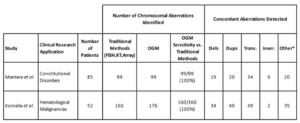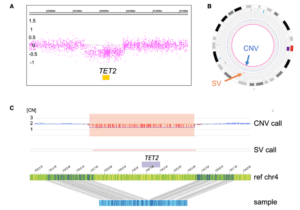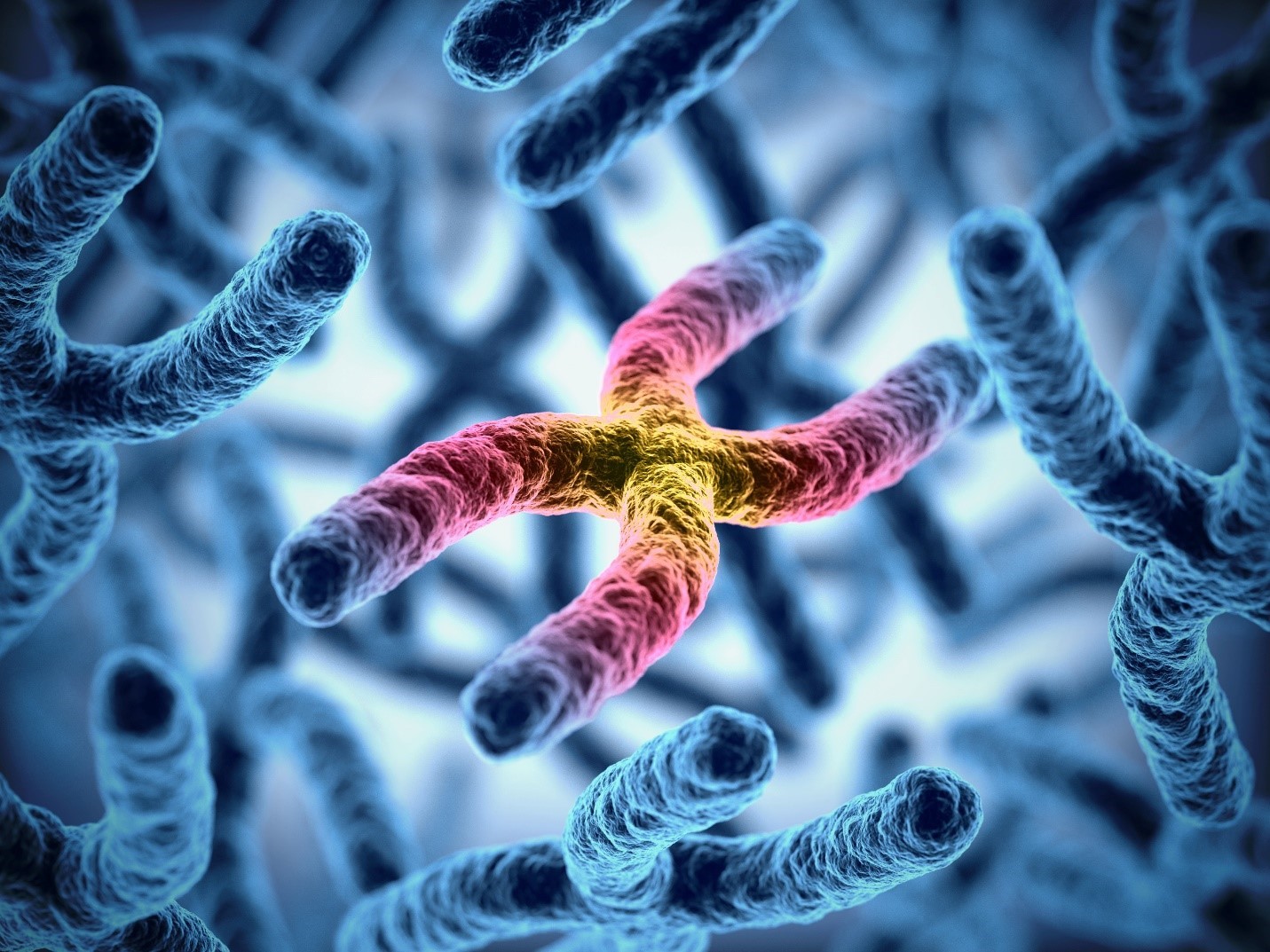Blog
Back-to-Back Publications in the American Journal of Human Genetics Compare Optical Genome Mapping to Traditional Methods for Structural Variant Analysis in Inherited Genetic Disease and Hematological Malignancies
This is a big week for Bionano publications! Two peer-reviewed studies from world-renowned scientists and clinicians from prestigious institutions in Europe including Radboud University Medical Center, Cochin Hospital in Paris, Hospices Civils in Lyon and the University Hospital of Clermont-Ferrand were published back to back in the American Journal of Human Genetics. One study analyzed the genomes of patients with inherited genetic disease and one study those of hematological malignancies.
These seminal papers outline the utility of optical genome mapping (OGM) as a superior alternative to traditional methods for structural variant (SV) analysis. The results showed OGM was 100% concordant with findings from fluorescent in-situ hybridization (FISH), karyotype, and CNV-microarray when these traditional methods identified one or more pathogenic variants in samples from study subjects. Additionally, the higher resolution of OGM for all types of variants relative to traditional cytogenomics techniques allowed for a more precise characterization of breakpoints and the identification of genes they affect, the detection of smaller cancer-associated events that usually escape detection by traditional means, and the discovery of additional complexity of rearrangements. These publications will appear in the August 2021 print issue but are available online now.

Among the key conclusions presented in both studies is that OGM has the potential to become a primary analysis for most molecular cytogenetics applications and provides a complement to existing sequencing-based methods for a more comprehensive view of genome variation. The authors describe OGM as a better alternative to traditional cytogenetics assays for both inherited genetic disease and hematological malignancy applications since it consolidates multiple antiquated methods requiring manual integration for interpretation into a single workflow with higher resolution for detection of all classes of SVs. Additionally, the authors highlight that the OGM workflow is ready to implement into routine clinical practice and that data can be easily analyzed by lab-oriented personnel, which is of crucial importance for clinical adoption and distinguishes OGM from sequencing-based methods which require complex analytical pipelines and specialized bioinformatic teams.

Dr. Laïla El Khattabi from Cochin Hospital in Paris, France, in collaboration with Dr. Alexander Hoischen and Dr. Caroline Schluth-Bolard, has led the consortium for this first publication where 85 constitutional samples with chromosomal aberrations in the context of developmental or reproductive disorders were analyzed by OGM and traditional cytogenetics techniques. She said, “OGM can really revolutionize the detection of chromosomal aberrations. I think it could be the most significant technological breakthrough in the history of cytogenetics since the CNV-microarray. This work is really just a beginning, and we are very enthusiastic about continuing it.”
The study of 52 hematological malignancy samples led by Dr. Alexander Hoischen from Radboud University Medical Center, Nijmegen, The Netherlands, analyzed a wide variety of myeloid and lymphoid samples (including CML, CLL, AML, ALL, MDS, MPN, and MM), representing the full range of hematological malignancy patients referred to the clinic. Dr. Hoischen, who co-coordinated the constitutional study as well, added, “I see many opportunities for advanced genome analysis methods to completely transform the way we analyze samples in our laboratories and clinics. Our goals are to provide workflows that find more variants, faster, so critically important information is available sooner and more reliably. OGM is one of the methods we believe is very promising. By streamlining the workflow and providing data and reports that can be readily interpreted and used by our teams without requiring specialized training, we believe OGM can become an alternative and maybe even a replacement for traditional cytogenetics in hematologic malignancies and genetic diseases. The fact that OGM and sequencing, including long-read sequencing, are highly complementary gives us an array of tools that can form the lab of the future. The progress Bionano has made with OGM has been substantial and we are excited about continuing to help guide them forward.”
Radboud University Medical Center released a news article, “Next generation cytogenetics is on its way,” diving into the effects OGM could have on the existing cytogenetics workflow. GenomeWeb also wrote about how these two peer-reviewed publications show OGM potentially providing an alternative to conventional cytogenetic approaches in the article, “Team Presents Optical Genome Mapping Method for Finding Chromosomal Alterations.”
The publication on constitutional samples is available at https://doi.org/10.1016/j.ajhg.2021.05.012 and the publication on hematological malignancies is available at https://doi.org/10.1016/j.ajhg.2021.06.001.
—
—



